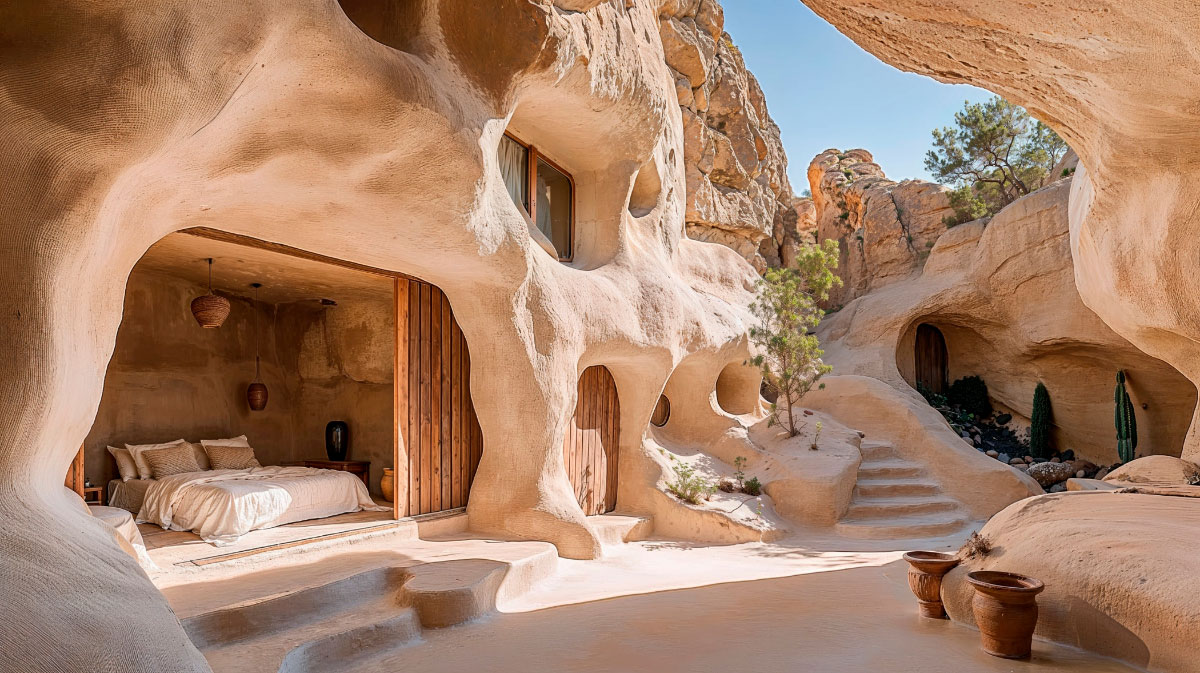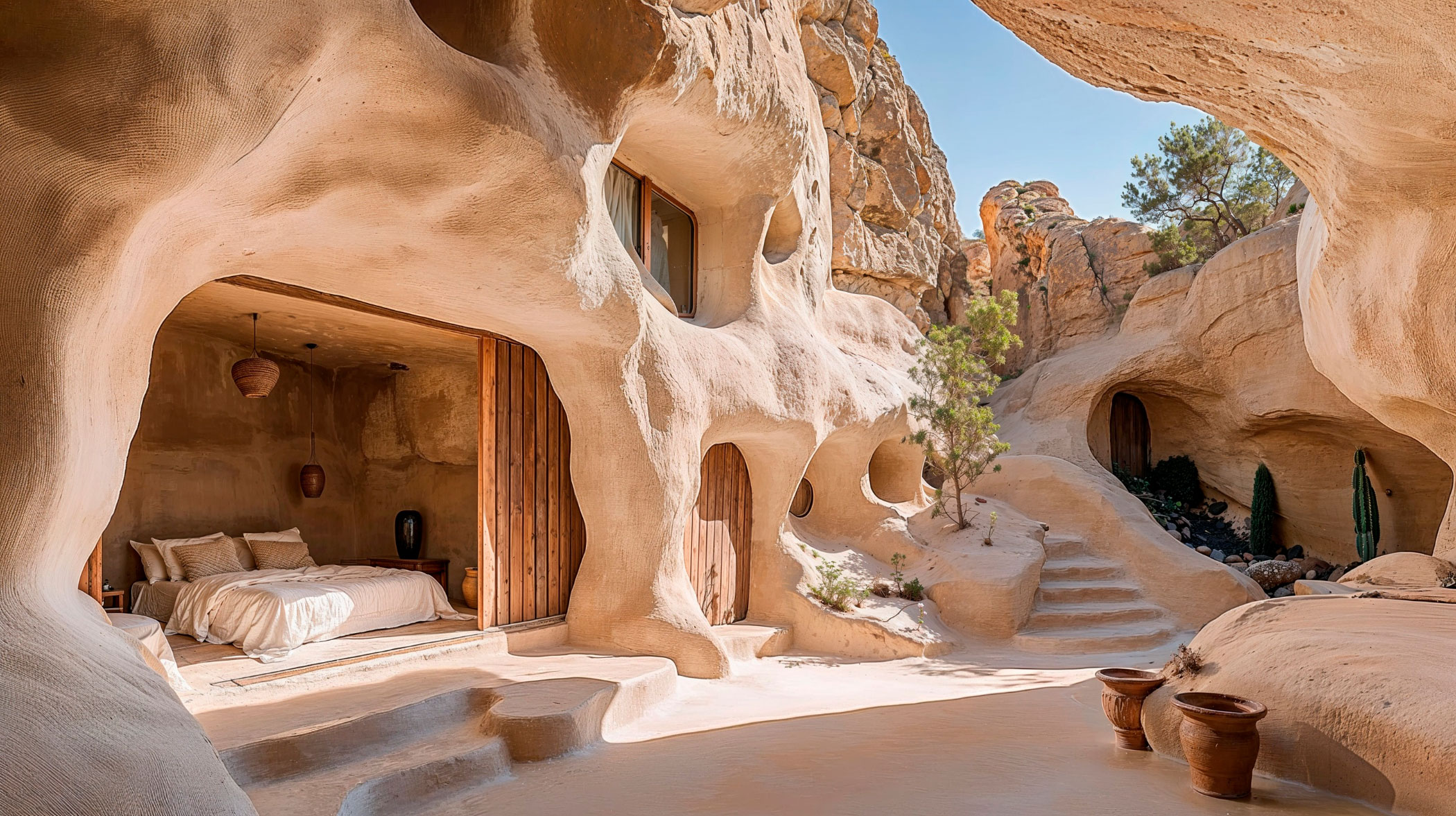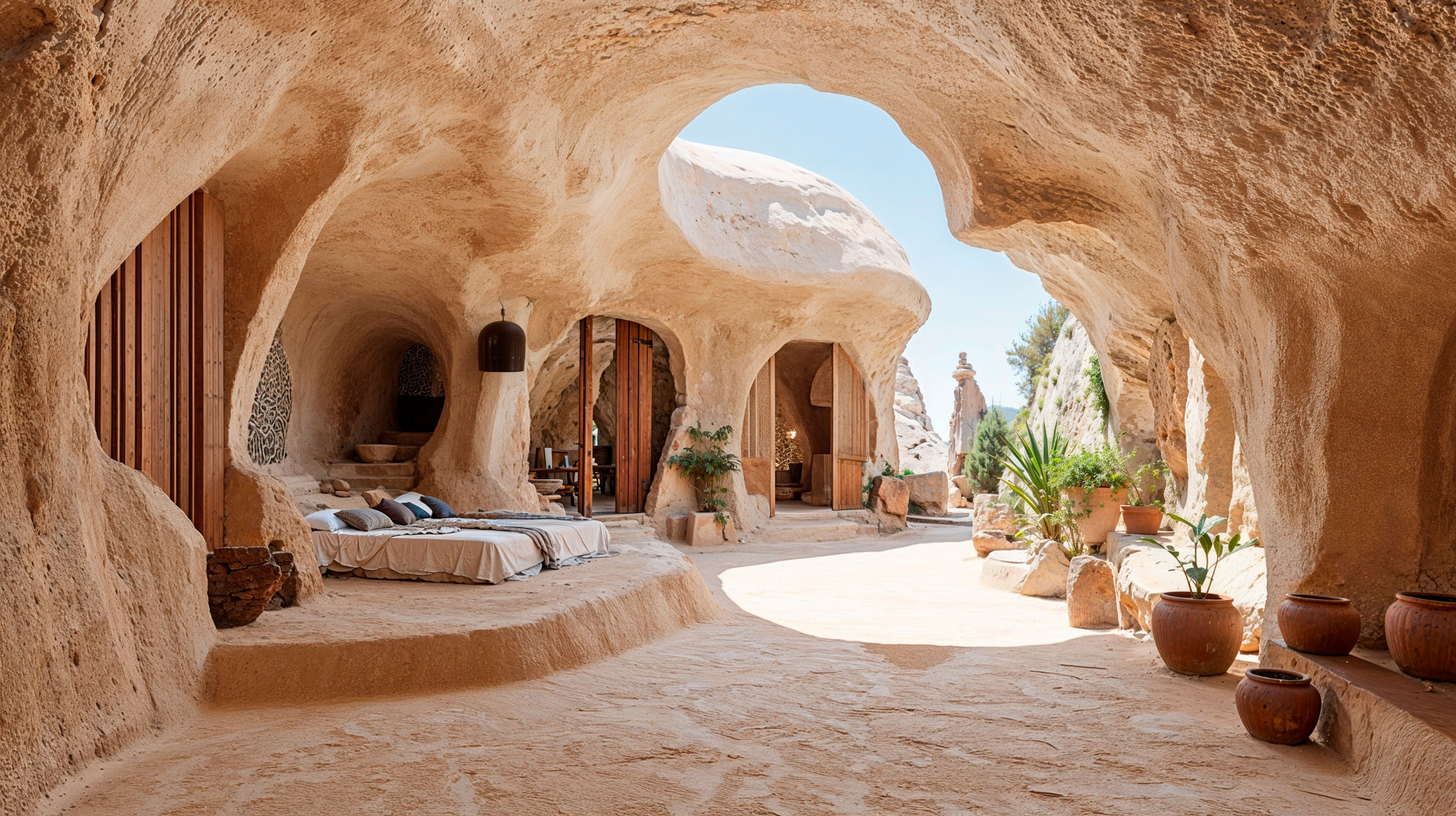The architecture is carved into the rock, so that the thick stone walls store the coolness of the night and release it during the day. In this way they stabilise the interior temperature, without resorting to large mechanical systems. The organically carved openings in the middle act as skylights and wind tunnels: they catch the breeze, induce cross currents and bathe the spaces in a filtered light that prevents glare.
The winding layout responds to the natural corridors of the site; each curve casts shade on the next and reduces direct sunlight. The transition between indoors and outdoors is porous: compacted sand floors, linen textiles and wooden doors blur the boundaries and allow air to circulate freely.
This passive strategy is complemented by indigenous vegetation in terracotta pots that accumulate moisture during the night and release it into the air at dawn. The result is a shelter that turns inhospitable aridity into thermal comfort, combining climatic optimisation and celebrating the very rock that shelters it.










